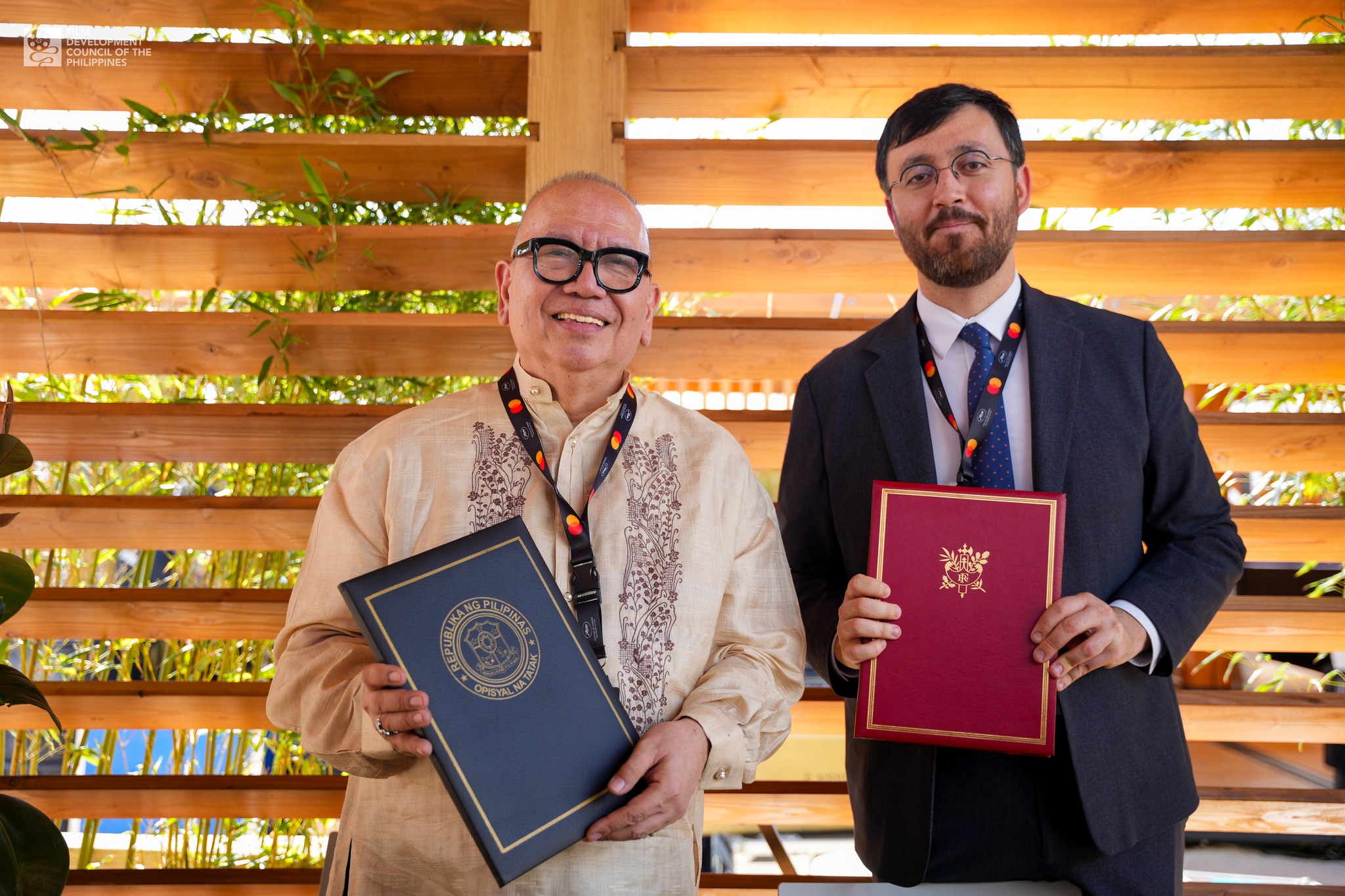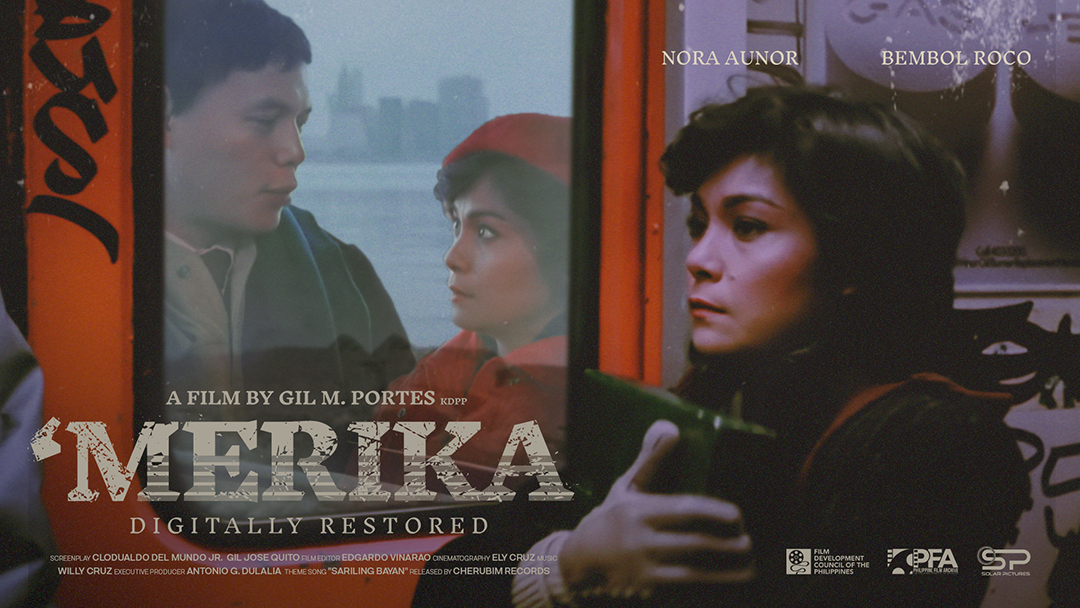PH Cinema’s pursuit of the Oscars dream
Especially in the past decade, the Philippines has been in no short supply of internationally acclaimed films, actors, and filmmakers. We have scored wins in the “Big 3” international film festivals, namely Berlin, Venice, and Cannes. We have also received awards from other A-List international film festivals such as Cairo, Locarno, Tallinn, Warsaw, Montreal, Tokyo, and IDFA in the Netherlands.

The columnist with acclaimed director Brillante Mendoza

Brillante Mendoza's “Mindanao” is the Philippines' official entry to the 93rd Academy Awards Best International Feature Film Category

“Mindanao” lead actress Judy Ann Santos was honored for her Cairo Best Actress victory at the 4th Film Ambassadors’ Night in 2020.

Jaclyn Jose in "Ma' Rosa" by Brillante Mendoza, the Philippine official entry to the Oscars in 2016.
Max Eigenmann in "Verdict" by Raymund Ribay Gutierrez of Pista ng Pelikulang Pilipino 2019, the Philippine official entry to the Oscars in 2019.

Christian Bables in “Signal Rock” by Chito S. Roño of Pista ng Pelikulang Pilipino 2018, the Philippine official entry to the Oscars in 2018.

“Birdshot” by Mikhail Red of Pista ng Pelikulang Pilipino 2017 was the Philippine official entry to the Oscars in 2017.
However, the country has yet to receive a nod, nor a shortlist inclusion from the Academy of Motion Picture Arts and Sciences despite sending 31 films for consideration for the Academy Awards (more commonly referred to as the Oscars) Best International Feature Film Category, formerly known as Best Foreign Language Film.
It was in 1953 when the Philippines sent its first official entry to the Oscars: “Genghis Khan” by National Artist for Film Manuel Conde. Other masterpieces sent for consideration were “Anak Dalita” by National Artist for Theater and Film Lamberto V. Avellana, “The Moises Padilla Story” by National Artist for Cinema Gerardo de Leon, “Ganito Kami Noon, Paano Kayo Ngayon?” by National Artist for Cinema and Broadcast Arts Eddie Romero, and “Bayan Ko: Kapit sa Patalim” by National Artist for Cinema Lino Brocka.
We have not been sending entries annually, but among our standout films that were submitted to the Oscars include “Karnal” by Marilou Diaz-Abaya, “Saranggola” by Gil Portes, “Ang Pagdadalaga ni Maximo Oliveros” by Auraeus Solito, “Ploning” by Dante Nico Garcia, “Bwakaw” by Jun Robles Lana, “Norte, Hangganan ng Kasaysayan” by Lav Diaz, “Heneral Luna” by Jerrold Tarog, and “Ma’ Rosa” by Brillante Mendoza.
Two more Portes works, “Gatas… Sa Dibdib ng Kaaway” and “Mga Munting Tinig,” as well as two other Diaz-Abaya films, “Milagros” and “Sa Pusod ng Dagat,” have also been submitted. Other Philippine official entries are “Dahil sa Isang Bulaklak” by Luis Nepomuceno, “Inagaw Mo ang Lahat sa Akin” by Carlos Siguion-Reyna, “Segurista” by Tikoy Aguiluz, “Anak” by Rory Quintos, “Dekada ’70” by Chito S. Roño, “Crying Ladies” by Mark Meily, “Donsol” Adolfo Alix, Jr., “Ded na si Lolo” by Soxie Topacio, “Noy” by Dondon Santos, “Ang Babae sa Septic Tank” by Marlon Rivera and “Transit” by Hannah Espia.
I am personally proud that the recent film entries of the Philippines in the Oscars came from our very own festival — the Pista ng Pelikulang Pilipino (PPP), which is organized by the FDCP. As the FDCP’s flagship program, the PPP has produced Oscar entries for three consecutive years since 2017: “Birdshot” by Mikhail Red, “Signal Rock” by Roño, and “Verdict” by Raymund Ribay Gutierrez .
For this year, the Film Academy of the Philippines (FAP) chose “Mindanao” by Mendoza as our 32nd entry. “Mindanao” had a strong showing in Cairo where Judy Ann Santos was declared as the Best Actress and Mendoza was awarded for Best Artistic Contribution. It won 11 awards at the 2019 Metro Manila Film Festival, including Best Picture, Best Director, Best Actress, and Best Actor for Allen Dizon, and took home six trophies at the 2020 FAP Luna Awards, including Best Picture, Best Director, and Best Actress.
Hoping for more Asian representation in the Oscars
As we await the announcement of shortlists and thereafter, the nominations, for the 93rd Academy Awards, we hope that more attention will be given to Asian films. Of the Best International Feature Film winners, 80 percent are European, 10 percent are Latin American, and 10 percent are Asian.
There are five Asian triumphs in the International Feature Film Category from the past two decades: Taiwan’s “Crouching Tiger, Hidden Dragon” by Ang Lee in 2001 which also won for Best Cinematography, Best Music, Original Score, and Best Art Direction; Japan’s “Departures” by Yōjirō Takita in 2009; Iran’s “A Separation” in 2012 and “The Salesman” in 2017, both by Asghar Farhadi; and South Korea’s “Parasite” by Bong Joon-ho in 2020 which also bagged Best Original Screenplay, Best Director, and Best Picture. Meanwhile, only two Southeast Asian films have been nominated: Vietnam’s “The Scent Of Green Papaya” by Tran Anh Hung in 1994 and Cambodia’s “The Missing Picture” by Rithy Panh in 2014.
“Parasite” had a fantastic run domestically, regionally, and globally, proving that Asian Cinema is just as relevant, thought-provoking, and award-winning as the rest of global cinema. Despite the commercial and critical success of “Parasite,” Liz Shackleton of ScreeDaily pointed out that Asian films remain under-represented at the Oscars. Money is the primary problem since an intense marketing campaign is needed to get noticed by the Oscars voters. Other factors are the differences in culture and aesthetics, plus the lack of time in executing a solid campaign.
It really is a long shot for the Oscar, but the massive success of “Parasite” makes me believe that we can attain the same achievement. That’s why I remarked to The Manila Times Entertainment last year that the Philippines may make it to the Oscars in five years. I know that with ample amount of support, the country can market its films globally because we are not lacking in talent and technical expertise.
In fact, three Filipino documentaries were deemed as eligible for consideration for this year’s Oscars: “Aswang” by Alyx Arumpac and “A Thousand Cuts” by Ramona Diaz for the Best Documentary Feature Film Category and “To Calm the Pig Inside” by Joanna Vasquez Arong for the Best Documentary (Short Subject) Category.
An Oscars assistance program from the government
We at the FDCP understand the great need for a huge marketing budget in order to stage a noticeable Oscars campaign. According to my research, a country needs at least P50 million to launch a decent Oscars campaign, provided that the official entry has won in an A-list film festival. Mendoza also told me, “The main improvement necessary for the Philippines’ Oscar campaign is the allotment of sufficient budget for the film’s publicity and promotion team in the United States.”
In 2016, the FDCP established the Oscars Assistance Program to support our country’s official entries in their bid for Oscars glory. We kicked off the Oscars Assistance Program by helping fund the promotional campaign for Mendoza’s “Ma’ Rosa” as well as for succeeding entries. For “Mindanao,” the FDCP has allocated P1 million for its Oscars campaign.
We believe that being recognized by the Academy will benefit the industry because an Oscar win or nomination would legitimize the country as an important contributor of films to the world. With this, we hope to encourage more foreign productions to invest in filming in the country and partner with local productions.
Aside from having a strong Oscars campaign, it would be a great boost if a film has received accolades from various international film festivals, thereby generating more buzz. Success in a globally competitive market does not happen overnight, that is why the FDCP has been supporting a lot of filmmakers who have entries in major international film festivals.
The International Film Festival Assistance Program is a travel assistance program that provides filmmakers with airfare and accommodations funding as well as standard travel allowances. Participating in international film festivals and film markets enhances not just our filmmakers’ network but also their skills, making it all the more crucial in our pursuit of the Oscars dream.
The need for increased concerted efforts
The assistance from the FDCP, however, is not enough to cover a producer’s expenses for campaigning for an Oscar nomination. That is why we have also been calling on government agencies as well as film industry members and the private sector to help support our country’s Oscars campaign.
Mendoza also highlighted the importance of timing. “The support should be given in a timely manner — because there is a short span of time, a few months — between the moment of submission and the date when the Academy members decide to watch and convene to announce the nominated films. Even then that is too late. We are either serious about getting a nomination or not, a half-hearted attempt is pointless,” he noted.
How to bridge this gap is one of my thrusts as FDCP Chairperson, and the national film agency aims to continue to empower more filmmakers to create high quality films and work towards their dream of making it big on the global stage, especially in the Oscars.
Filipinos have even made it to the Academy of Motion Picture Arts and Sciences, which has more than 8,000 members. This is a testament of the Academy’s recognition of Filipino talent. Auteurs Mendoza and Diaz became members of the Academy in 2017 while in 2019, PJ Raval, Baby Ruth Villarama, Josie Trinidad, Ditsi Carolino, Trevor Jimenez, Bobby Pontillas, and Lisa Valencia-Svensson were named as new members.
“We have so many things to offer and share to the world, so when it comes to our craft, we should always think global, and not confine ourselves to the limits of what many in the industry prefer. That is like a cage we should free ourselves from,” commented Mendoza. Aside from having two films as Philippine official entries under his direction (he also produced “Mindanao”), “Verdict” is Mendoza’s third PH official entry, this time as an executive producer.
And I wholeheartedly agree. As we lobby for more support for our Oscars campaign, our filmmakers must continue to believe in themselves, take more risks, and be more courageous in showcasing Filipino stories to the global film scene. It is an honor to help the country in having better representation in world cinema, and the government and industry must carry on in fostering a supportive, encouraging, and nurturing environment for Filipino filmmakers.
Notes from the Chair is part of the Arts Awake section of The Sunday Times Magazine published by The Manila Times. Click HERE to view the article on The Manila Times website.





